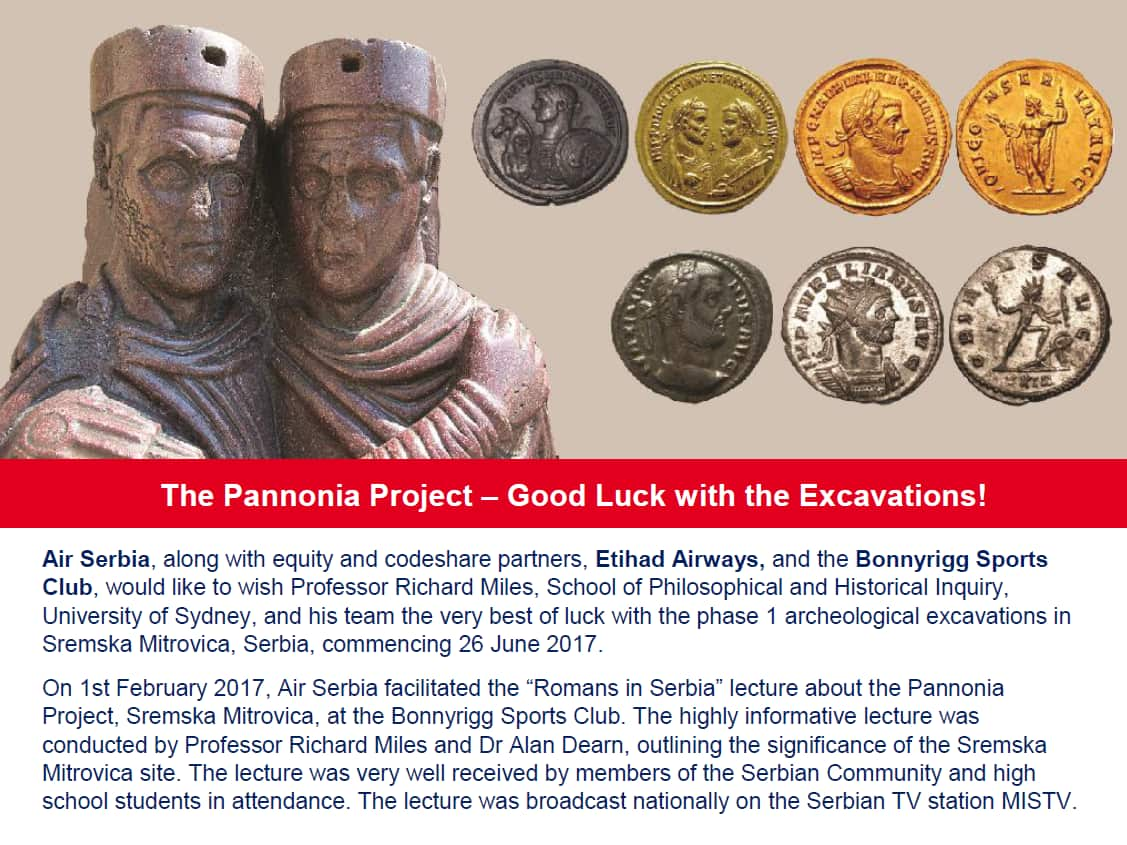
Повезане теме

Аустралијанци ископавају Римљане!

The Romans in Serbia lecture can be seen on
The Romans in Serbia, by Dr Alan Dearn, Subject Master History, Sydney Grammar School
The contribution of what is now Serbia to the Roman Empire was huge. The Roman provinces of Pannonia and Moesia, where Serbia stands, was one of the most important frontier zones of the Empire, protecting the Danubian frontier from constant pressure from Germanic peoples to the north. By the third-century AD, during a period of crisis and civil war in the empire, Italy practically became less relevant to the survival of the empire than the Balkan provinces. 17 Roman emperors were born within the current borders of Serbia, 18 if you count the Byzantine emperor Justinian. Most of them came from military backgrounds and became emperor as a result of civil war. Only Italy was home to more emperors during the history of Rome. Probably the most famous Roman emperor from Serbia was Constantine, who embraced Christianity. 10 of these emperors were born around Sremska Mitrovica (Roman Sirmium), and the Pannonia Project is particularly interested in one of them: the emperor Maximian, who ruled from 285-310. Maximian, along with his co-emperor Diocletian and two other colleagues formed a 'Tetrarchy' (rule of four) who brought an end (temporarily) to instability in the empire. Maximian was forced to kill himself in 310 after fighting a civil war against Constantine. As a way of boosting his prestige, Maximian ordered a palace to be built for him in the town of his birth, and that is the site the Pannonia Project will be excavating. The site will eventually join other Serbian Roman sites like Gamzigrad and Viminacium as important reminders of Serbia's Roman heritage as and worldwide interest.

